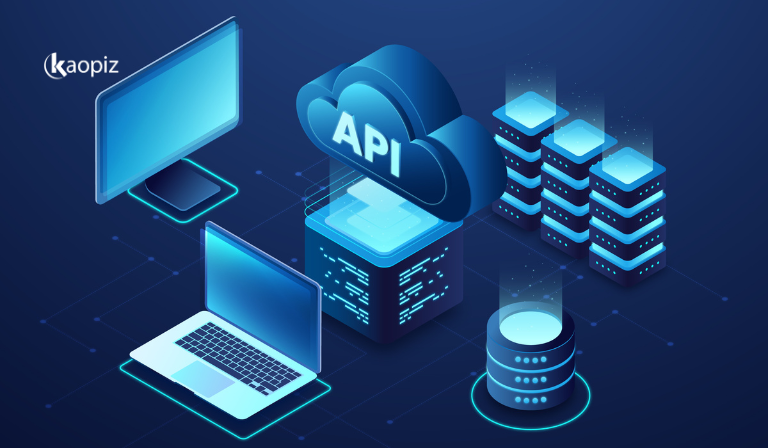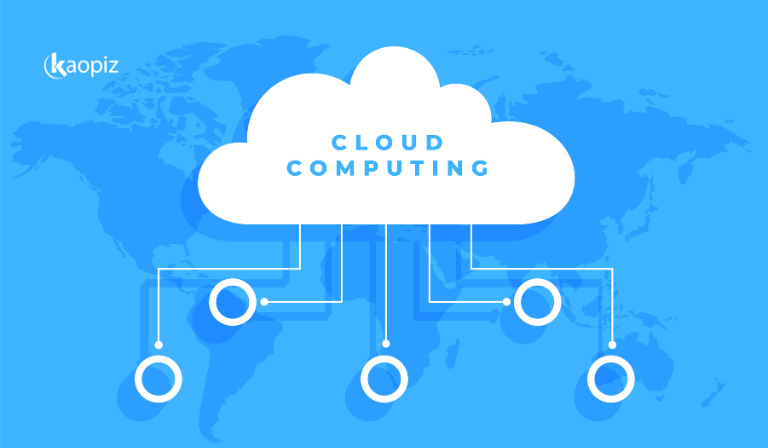Cloud Network Security in 2025: How to Protect Your Infrastructure
In today’s digital-first world, businesses are rapidly migrating to the cloud to boost agility, scalability, and cost-efficiency. However, this transformation also brings new challenges—especially when it comes to securing cloud-based infrastructures.
Cloud network security has become a critical priority for IT leaders, as threats such as data breaches, misconfigurations, and unauthorized access continue to evolve.
This article provides a comprehensive overview of cloud network security, highlights best practices, and explores emerging trends shaping the future of secure cloud environments in 2025.
Table of Contents
- Cloud Network Security Overview
- Core Components of Cloud Network Security
- How Does Cloud Network Security Work?
- Why Network Security in Cloud Computing Matters?
- Common Threats to Cloud Networks (+ Real-World Examples)
- Challenges of Cloud Network Security
- Best Practices for Cloud Networking and Security
- Future Trends in Cloud Security Network
- Cloud Network Security with Kaopiz
- Conclusion
- FAQs
Cloud Network Security Overview
First, let’s explore the definition of cloud network security and how it differs from traditional network security.
What Is Cloud Network Security?
Cloud network security is a comprehensive framework of technologies, strategies, and operational best practices designed to protect data, applications, and infrastructure within cloud environments.
With workloads deployed in containers, virtual machines, and serverless functions, security must evolve to match. It focuses on protecting these assets by managing access, monitoring traffic, detecting threats in real time, and enforcing policies, regardless of where the workloads reside or how they scale.

At its core, cloud network security is about managing risk in a constantly shifting environment:
Key technologies include:
Cloud Network Security vs. Network Security vs. Cloud Security: Key Differences
While often used interchangeably, cloud network security, network security, and cloud security target different layers of IT infrastructure protection.
First, network security focuses on securing on-premises networks from unauthorized access, misuse, or cyber threats. It typically includes tools like firewalls, VPNs, and intrusion detection systems (IDS). For example, a company might use a firewall and VPN to protect its internal LAN and prevent external access to sensitive resources.
Next, cloud security is a broader concept that involves protecting data, applications, and services hosted in the cloud. This includes access control, encryption, compliance enforcement, and workload protection, regardless of the underlying network. A common use case would be encrypting files in Amazon S3 and managing access through role-based permissions.
The last term is cloud network security which is a subset that specifically safeguards the networking layer in cloud environments. It involves securing cloud-native infrastructure like virtual networks, routing tables, cloud firewalls, and traffic monitoring tools. For instance, using AWS Security Groups or Azure Network Security Groups (NSGs) to manage and control data flow between services.
Here is the table comparing the network security vs. cloud security vs cloud network security:
| Aspect | Network Security | Cloud Security | Cloud Network Security |
|---|---|---|---|
| Scope | On-premises networks | Entire cloud ecosystem | Networking layer in cloud environments |
| Focus Areas | Firewalls, VPNs, IDS/IPS | Identity, data, workloads, compliance | Cloud-based firewalls, VPCs, routing, traffic |
| Deployment Environment | Physical/virtual local networks | Public, private, or hybrid clouds | Public/private cloud network layers |
| Example Tools | Cisco ASA, pfSense, Fortinet | AWS IAM, Azure Security Center | AWS VPC Security Groups, Azure NSG, GCP Firewall |
Key takeaway: Network security secures local environments, cloud security protects everything within the cloud, and cloud network security ensures the safety of how cloud resources connect and communicate.
Core Components of Cloud Network Security
An effective network security cloud is built on a combination of advanced technologies and layered defenses that work together to protect data, users, and applications in cloud environments.
Below are the core components that form the foundation of a secure architecture:
Firewalls (Virtual and Cloud-native)
Firewalls remain a fundamental part of network security, even in the cloud. However, we move beyond traditional hardware appliances to virtual firewalls and cloud-native security groups.

These tools help enforce network segmentation, prevent unauthorized access, and apply zero-trust policies at the virtual perimeter.
Intrusion Detection & Prevention (IDS/IPS)
Intrusion Detection Systems (IDS) monitor network traffic for suspicious activity, while Intrusion Prevention Systems (IPS) actively block threats in real time.
In a cloud setting:
Modern solutions often leverage AI or machine learning algorithms to recognize anomalies and trigger automated responses for enhanced protection.
Encryption Protocols (in Transit & at Rest)
It is essential to protect sensitive data from interception, theft, or tampering—both while it’s moving and while it’s stored.

Leading cloud providers offer encryption by default and support key management services (KMS) that let you control access to encryption keys for compliance and governance.
Identity and Access Management (IAM)
IAM is the backbone of cloud security, controlling who can access what, under which conditions, and for how long.
A strong IAM strategy minimizes the risk of insider threats, credential theft, and unauthorized access, making it a non-negotiable component of any framework.
How Does Cloud Network Security Work?
Cloud network security works by using multiple layers of protection to keep your data safe as it moves through the cloud. It checks every bit of information (called packets) that enters or leaves your cloud systems to make sure nothing dangerous gets in.

Here’s how it works:
Why Network Security in Cloud Computing Matters?
Network security in cloud computing plays a key role in protecting sensitive information, preventing cyberattacks, and ensuring systems run smoothly, no matter where your users or resources are.

Here are the benefits of cloud network security:
Common Threats to Cloud Networks (+ Real-World Examples)
As businesses move more operations to the cloud, cyber threats are evolving just as quickly. Below are some of the most common threats targeting cloud networks, along with real-world examples that highlight the risks of poor security.
Misconfigurations and Insecure APIs
One of the biggest security risks in cloud environments comes from misconfigured settings, like leaving storage buckets public or not restricting access properly. Additionally, insecure APIs (which connect applications and services) can expose sensitive data if not properly secured with authentication and encryption.

These issues often arise from human error, lack of visibility, or poor change management, making it easy for attackers to exploit vulnerabilities without breaching the system directly.
Real-World Example:
In 2019, Capital One suffered a major data breach affecting over 100 million customers. The breach was caused by a misconfigured web application firewall, which allowed a hacker to access sensitive customer information hosted on AWS via a vulnerable API. This incident highlighted how even a single misstep in configuration or API security can lead to massive consequences.
DDoS Attacks
Distributed Denial of Service (DDoS) attacks aim to overwhelm cloud services by flooding them with massive amounts of fake traffic. The goal is to crash servers, slow down performance, or make applications completely unavailable to legitimate users.
Cloud environments are especially vulnerable because of their public-facing nature and scalability, which attackers try to exploit. These attacks can cause serious business disruption, service downtime, and even financial losses if systems aren’t properly protected.
Real-World Example:
In 2020, AWS reported a record-breaking DDoS attack that peaked at 2.3 terabits per second. Thanks to AWS’s built-in DDoS protection service (AWS Shield), the attack was mitigated without customer impact, but the scale of the incident showed how critical cloud-based DDoS protection is for enterprises of all sizes.
Insider Threats
Insider threats come from people within the organization—employees, contractors, or partners—who have access to cloud systems. Whether intentional or accidental, these users can misuse their access to leak, steal, or delete sensitive data.

These threats are especially dangerous in cloud environments because access is often granted across multiple services and regions. Without proper monitoring and least-privilege access controls, a single insider can cause significant damage.
Real-World Example:
In 2021, a former employee of Kaseya accessed internal systems after departure and attempted to manipulate company data. Although it was stopped in time, the event highlighted the importance of quickly revoking cloud access and monitoring user activity.
Credential Theft
Credential theft happens when hackers steal login information, usually through phishing, brute-force attacks, or malware. In the cloud, where one set of credentials can unlock access to vast resources, stolen logins can lead to large-scale breaches.
Once inside, attackers can move laterally, escalate privileges, and exfiltrate data—often undetected for weeks. MFA and behavioral monitoring are essential to reduce this risk.
Real-World Example:
In 2019, Microsoft detected a large-scale phishing campaign that compromised over 10,000 Office 365 accounts, including accounts with administrator access. The attackers used the stolen credentials to access email, files, and internal systems, proving just how dangerous credential theft can be.
Shadow IT and Multi-cloud Complexity
Shadow IT refers to the use of cloud services, applications, or tools without the knowledge or approval of the IT department. Employees may use unsanctioned file-sharing platforms, collaboration tools, or storage services for convenience, unintentionally exposing sensitive data to risk.

At the same time, managing multi-cloud environments (e.g., using AWS, Azure, and Google Cloud together) adds another layer of complexity. Each provider has different tools, security models, and configurations, making it harder to monitor activity, enforce consistent policies, and detect vulnerabilities across platforms.
Real-World Example:
In 2021, Pfizer, the global pharmaceutical giant, accidentally exposed sensitive patient data due to a misconfigured Google Cloud storage bucket. The incident stemmed from a third-party vendor using cloud services outside the approved IT framework—a classic case of shadow IT. As a result, private medical records and prescription details were left accessible without authentication.
Challenges of Cloud Network Security
While network security cloud computing offers many benefits, it also introduces a new set of challenges. As organizations scale and adopt multi-cloud strategies, securing networks becomes increasingly complex. Below are some of the key challenges businesses face:
Best Practices for Cloud Networking and Security
To protect data, applications, and infrastructure in the cloud, businesses must adopt a proactive, layered security approach.

The following best practices help reduce risks, prevent breaches, and ensure a secure and compliant cloud environment:
By following these best practices, organizations can build a strong cloud security posture that scales with growth, supports compliance, and reduces operational risks.
Future Trends in Cloud Security Network
As cloud usage grows, so do the threats. Here are key trends shaping the future of cloud network security:
Cloud Network Security with Kaopiz
At Kaopiz, we understand that secure cloud infrastructure is critical to your business success. That’s why we offer comprehensive cloud network security services designed to protect your data, applications, and operations across public, private, and hybrid cloud environments.

Why Partner with Kaopiz?
Whether you’re starting your cloud journey or scaling a global infrastructure, Kaopiz is your trusted partner for building a secure, resilient, and future-ready cloud environment.
Conclusion
As businesses continue to embrace cloud technologies, securing cloud networks has become more critical than ever. From protecting sensitive data and ensuring compliance to defending against evolving cyber threats, cloud network security is no longer optional—it’s a strategic necessity.
By understanding common risks, following best practices, and staying ahead of future trends, organizations can build a resilient, secure cloud infrastructure. Partnering with experienced providers like Kaopiz ensures your cloud environment is protected with the right tools, expertise, and ongoing support.
FAQs
How Can I Choose the Right Cloud Network Security Solution?
Start by assessing your cloud environment (public, private, hybrid, or multi-cloud), compliance needs, and risk profile. Look for solutions that offer scalability, automation, centralized visibility, and support for your cloud platforms (e.g., AWS, Azure, GCP). A trusted partner like Kaopiz can help evaluate and tailor the right solution for your business.
Is Cloud Network Security Suitable for Small and Medium Businesses?
Absolutely. It is essential for businesses of all sizes, and many modern tools are designed to be scalable and cost-effective. SMBs benefit from managed services and cloud-native security features without needing large in-house teams.
How Much Does It Cost to Implement Cloud Network Security?
Costs vary depending on the size of your infrastructure, number of users, required tools (e.g., firewalls, monitoring, IAM), and whether you’re using managed services. While initial investment may be required, strong cloud network security helps avoid costly breaches and ensures long-term savings. At Kaopiz, we offer flexible solutions tailored to your budget and growth plans.
Trending Post




















